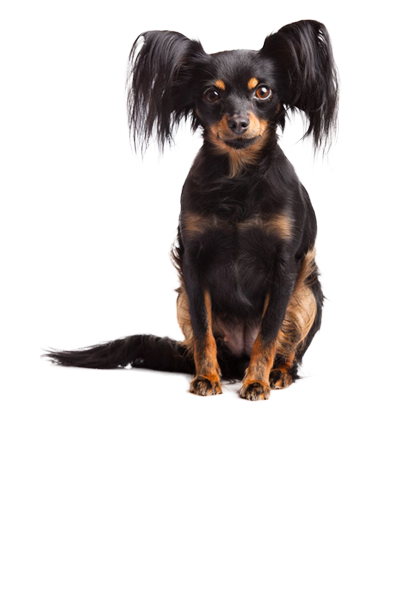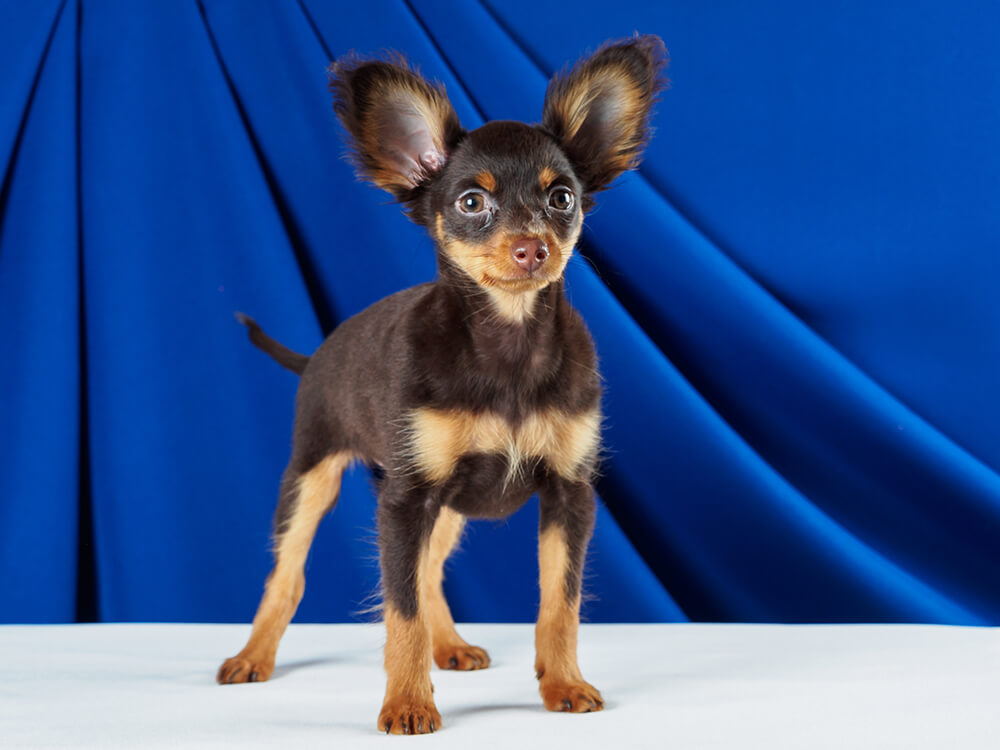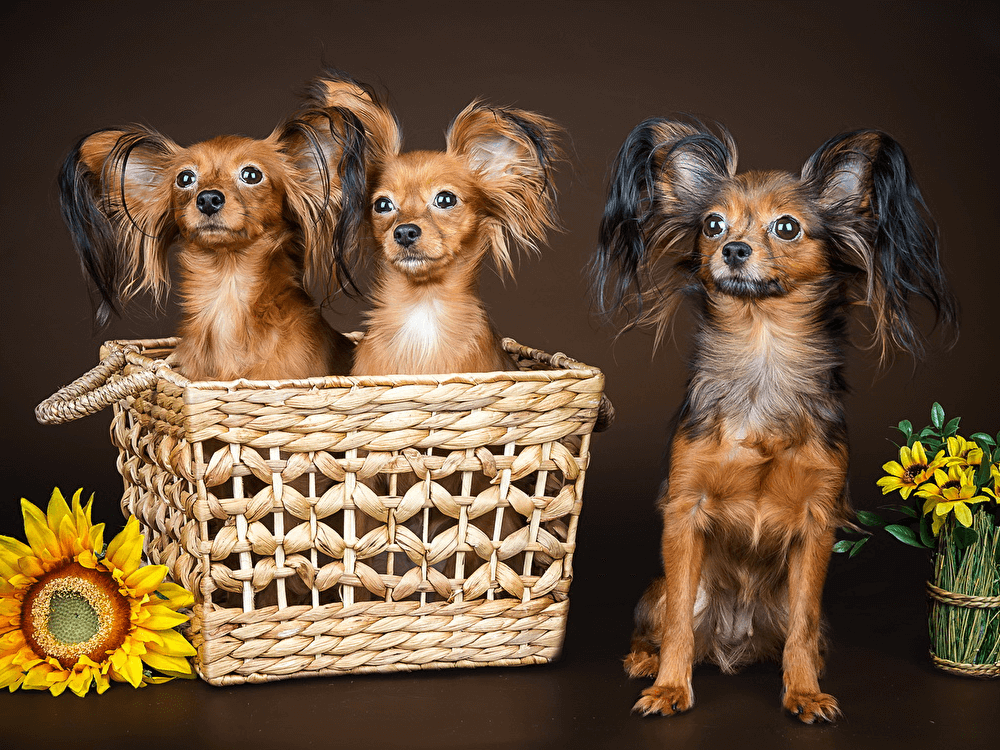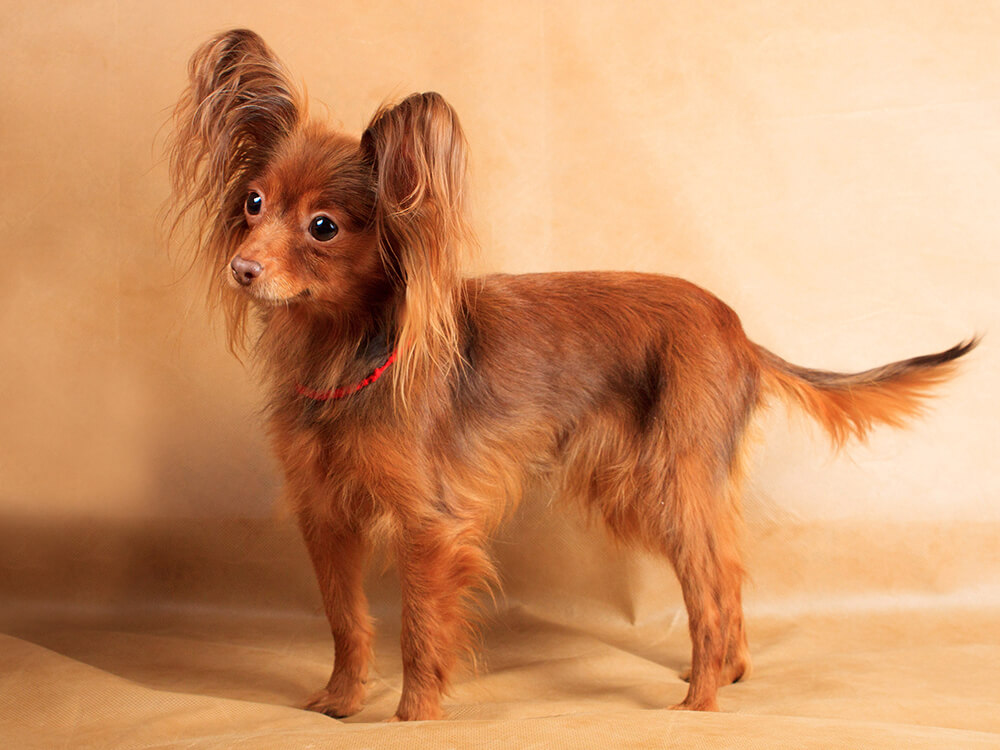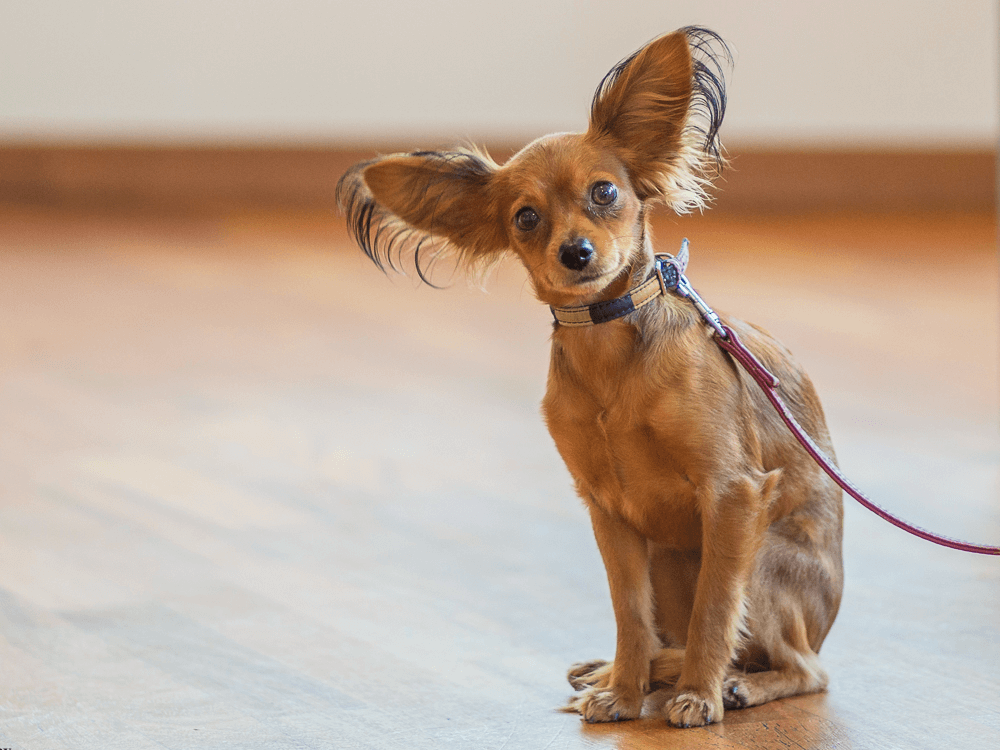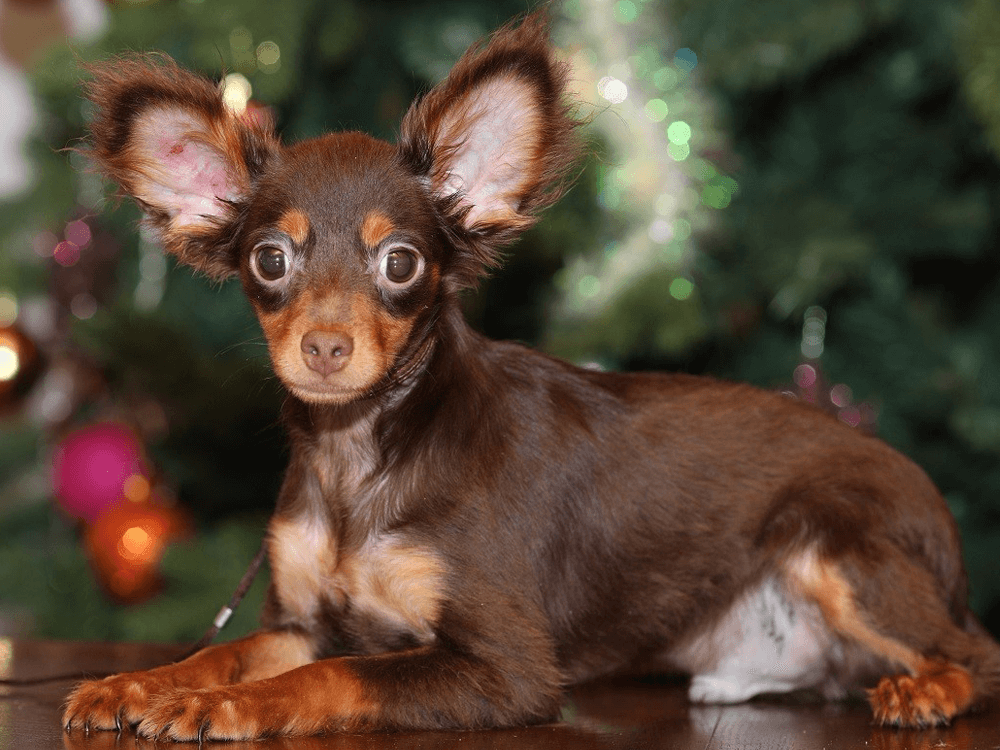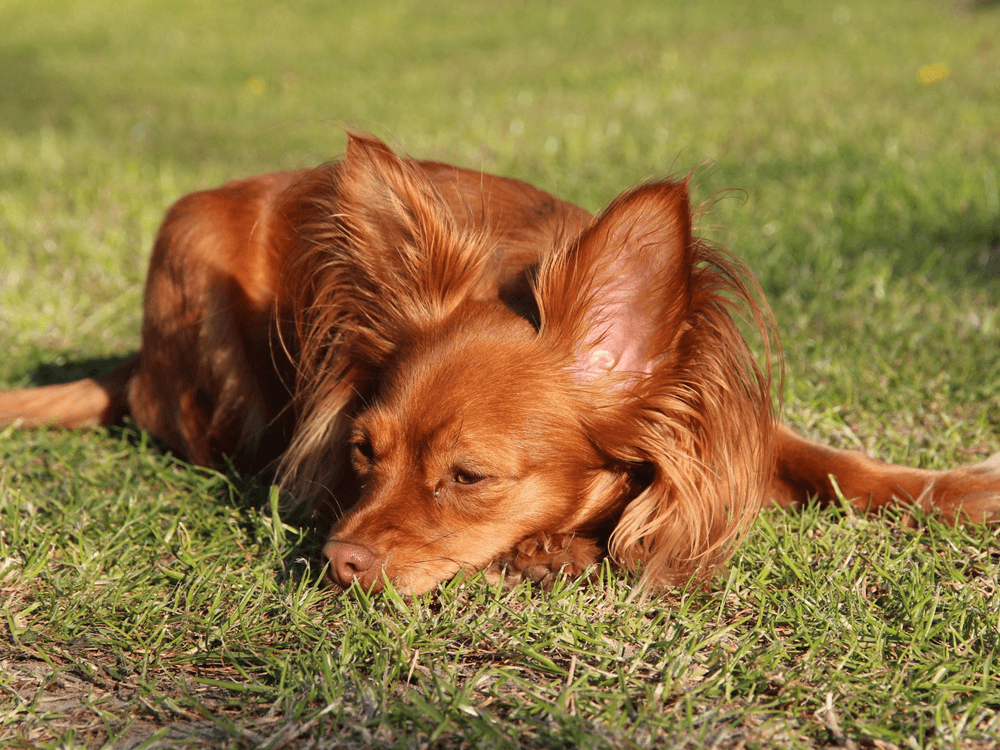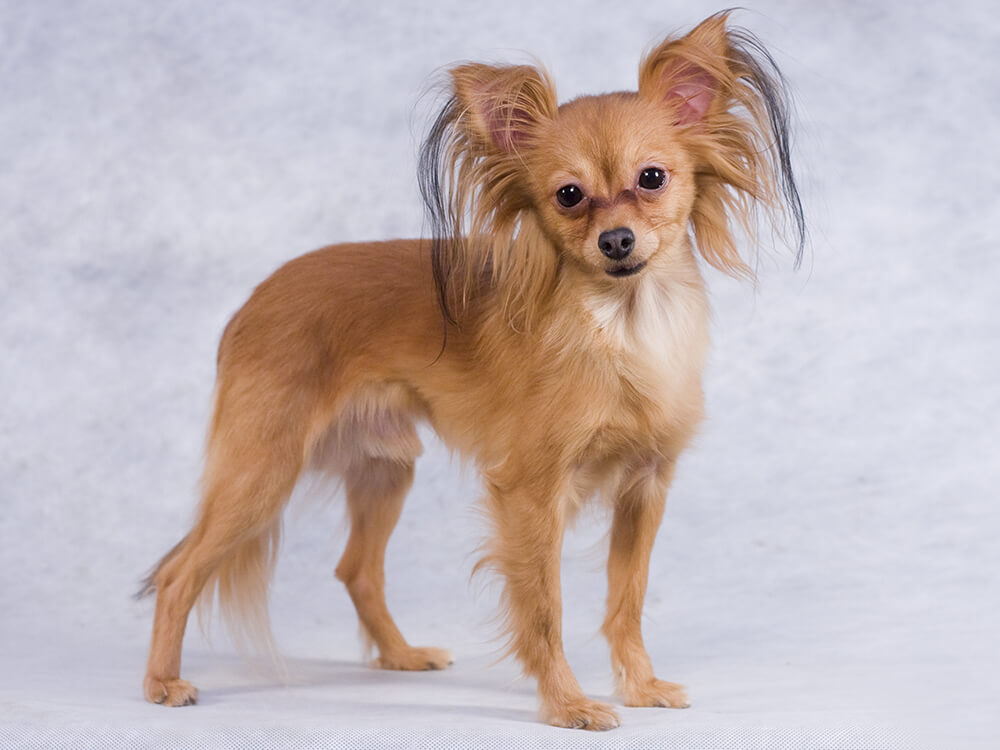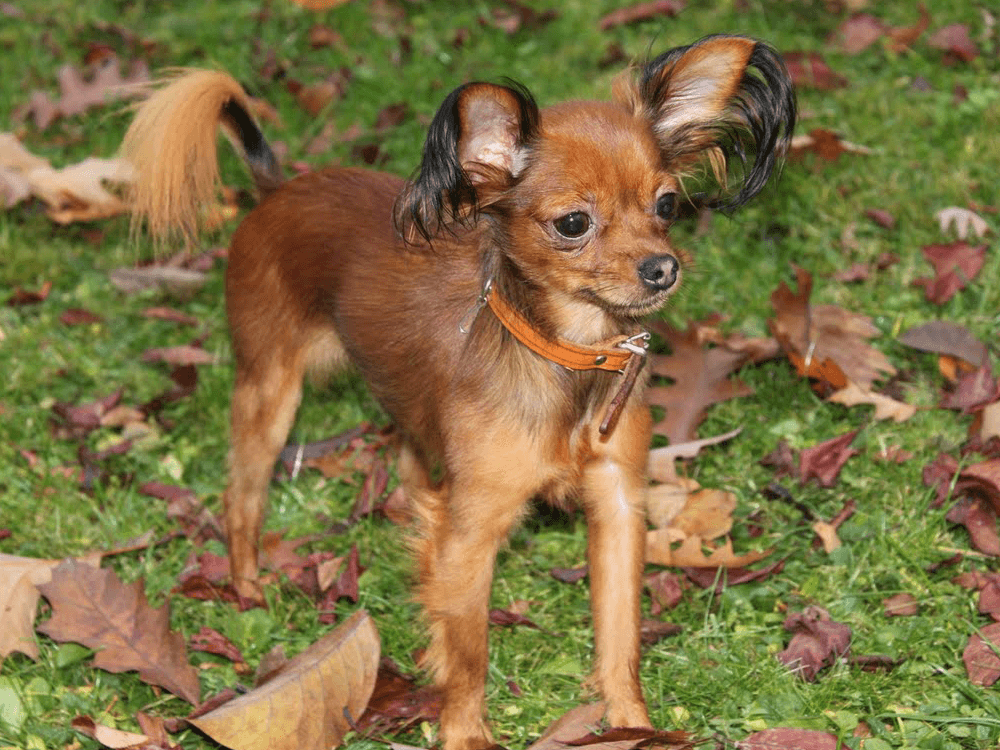
Russian Toy Terrier Breed Pictures
Vital Breed Stats
| Height: | 20 - 26 cm M | 20 - 26 cm F |
| Weight: | 1 - 3 kg M | 1 - 3 kg F |
| Breed Group: | Pastoral Dog Group |
| Life Expectancy: | 10 - 13 years |
| KC Registered: | No |
Breed Characteristics
| Size: |  |
| Grooming: |  |
| Exercise Level: |  |
| Trainability: |  |
| Barking Level: |  |
| Good with Children: |  |
| Good with other pets: |  |
| Affectionate: |  |
| Protective: |  |
| Cost to Keep: |  |
Give a thumbs up if you love the Russian Toy Terrier

0
More About the Breed
History
The Russian Toy Terrier is believed to have come from English-type terriers during the time of Russian emperor Peter the Great in the 1700s. Also known as Russkiy toy in other countries, this dog breed was created as a companion for the nobility and upper classes. Records show that eight smooth-coated Russian toy terriers competed in a Saint Petersburg show in 1874. The breed became very popular until the early '90s and was a regular in dog shows, often winning awards. During the October Revolution of 1917, its popularity and numbers dwindled as it was associated with the aristocracy and gained a bad image. In fact, only one dog was shown in Saint Petersburg in 1947 and a small number of pedigree or purebred Russian toys were left.
Breeders decided to create a new type of Russian Toy Terrier from the remaining toy-sized terriers, which had some of the old characteristics, along with new features such as a high head that is not wide, flat cheeks, and round eyes. During the '60s, over seventy dogs joined an exhibition and the first standard was created. This adorable breed remained famous in its native country, but not so much elsewhere. It only arrived in the UK in 2008. The Russkiy toy was recognised by the Kennel Club in 2017.
Appearance
The Russian Toy Terrier is one of the tiniest dogs in the world. This adorable dog weighs 4–6 pounds and stands 20–28 centimetres. It has a distinctive high head that is small in relation to its body. It has a pointed muzzle, a nicely defined stop, a small nose, slightly pronounced cheekbones, and a perfect scissor bite. If you look at the Russian toy terrier, you will immediately notice its large round eyes, huge upright ears that are set high, and lean long neck.
The Russian Toy Terrier can either be long-coated or smooth-coated. The long-coated type has a long coat that is straight or slightly wavy with profuse feathering on its ears, legs, and tail.
Grooming
The Russian Toy Terrier has higher maintenance needs in the grooming front, requiring daily brushing to prevent matts and tangles. The smooth-coated type has a short, shiny, and close-lying coat with no undercoat, which makes grooming very easy as it will only need a quick brush once or twice a week.
Prone to tooth problems like most toy dogs, the Russian Toy Terrier’s teeth must be brushed daily, if possible. Its ears should also be checked for wax build-up and its nails trimmed to avoid uncomfortable overgrowth.
Temperament
Intelligence
The Russian Toy Terrier is intelligent and willing to please, which make training easy. Tiny dogs are very easy to spoil because they are often treated as babies. Owners often let go of bad behaviours that are not usually tolerated in big dogs. It is important for training to start early and rules to be set out, so it does not become a difficult dog. Because the Russkiy toy is delicate and can be easily injured when handled roughly, it is better off to a family with older children that know how to handle dogs. It does well with dogs and cats it grows up with, but care should be taken when introducing new pets, especially large dogs.
Owners need to know that even though breeds have predisposed temperaments in general, each dog is unique. There are many factors that develop a certain dog's personality and abilities. Environment, training, and socialisation can help shape up the overall characteristics of a dog. In short, humans have a say on how their pets would grow up.
Nutrition
Tiny dogs have higher caloric needs than larger breeds, but this does not mean an unlimited amount of food. It is important to have a feeding schedule and stick to it to avoid digestive or weight problems.
The following are typical calorie needs of an adult Russian Toy Terrier per day:
- Senior and less active: up to 240 calories daily
- Typical adults: up to 270 calories daily
- Physically active/working dogs: up to 300 calories daily
Feeding
Health
Exercise
Cost of Ownership
The Russian Toy Terrier is a tiny breed that is generally inexpensive to own. However, before we talk about the expenses one will spend when raising this dog, it is worth knowing that this breed remains to be rare outside of Russia, so obtaining one can be challenging. Interested individuals need to register their interest to a breeder and be on a waiting list. Purchasing a well-bred Russian Toy Terrier can cost you around £400 to £650.
Now, for the expenses, new owners need to prepare the basic dog equipment so the new puppy gets comfortable. It will need a crate, bed, collar/lead, and toys, which will roughly cost £200. For food in its different stages, expect to pay around £20 to £30 per month. For veterinary care, the costs will set you back £800 a year to cover regular check-ups, vaccinations, and other preventive treatments. Lastly, an important cost is dog insurance, which will be around £20 for basic coverage. However, since costs vary depending on the company, your location, and the dog’s health, do your research on the cheapest premium you can afford.
Russian Toy Terrier Breed Highlights
- The Russian Toy Terrier is a tiny dog suitable for apartment dwellers.
- It needs to be fed a diet high in protein specifically formulated for small dogs.
- It only needs at least twenty minutes of exercise per day.
- It is a cheap dog to raise, but obtaining one can be challenging because it is a rare breed.
